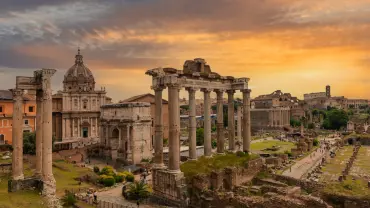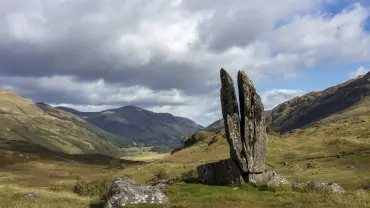The fifteenth century was the start of the Age of Discovery and some of the greatest maritime adventurers in history, including Vasco da Gama, Piri Reis, Zheng He, Christopher Columbus, Amerigo Vespucci and Bartolomeu Dias, sailed the world’s oceans searching for new and uncharted worlds. Among them was Pedro Cabral, the original accidental tourist.
Remarkably, the voyages of Cabral were largely forgotten for over three hundred years while the achievements of contemporary explorers such as Christopher Columbus and Vasco da Gama were widely lauded. Yet, the significance of his discovery cannot be overstated, as it led to the Portuguese colonisation of Brazil, which would go on to have profound implications for the indigenous populations and the future geopolitical landscape.
This is the remarkable story of the Cabral Expedition and the discovery of Brazil.
The Early Life of Pedro Álvares Cabral

Portrait of Pedro Alvares Cabral. (Credit: DeAgostini via Getty Images)
Unlike most of the well-known fifteenth and sixteenth century explorers whose life histories are often chronicled in intricate detail, very little is known about the early life of Pedro Álvares Cabral, sometimes written as Pedro Cabral or Pedro Alvares.
It’s believed he was born in the late 1460s, possibly 1467 or 1468, in the small central Portuguese town of Belmonte, around three hundred kilometres northeast of Lisbon. He was christened Pedro Álvares de Gouveia (his mother’s surname) and is said to have taken the name Cabral, the surname of his father, as late as 1503 when his elder brother died.
The family were considered members of the lower nobility and he would probably have received a well-rounded education, befitting someone of his social standing, which would have included training in navigation and military tactics. His upbringing in a nation at the forefront of maritime exploration undoubtedly set the stage for his future endeavours.
As the early stages of his career progressed, Pedro Cabral was in service at the court of King Manuel I. The King recognized his contributions by granting him a substantial yearly stipend of 30,000 reals. In addition, Cabral was bestowed with the prestigious title of Fidalgo, serving as a counsellor to the King. Further elevating his status, he was appointment as a Knight of the Order of Christ, an esteemed order that succeeded the legendary Knights Templar in Portugal.
The Voyages of Cabral
After da Gama successfully established a sea route to India, paving the path for Portugal’s expansive colonial empire across South America, Africa, parts of Asia, and numerous Atlantic islands, King Manuel I assigned Cabral the responsibility of commanding a second voyage to further this exploration.
Cabral was appointed Capitão-mor, or Major-Captain, of a thirteen-ship fleet comprising 1,500 men, designed to establish trade relations in India and to spread the word of Catholicism. The voyages of Cabral were to follow the same route da Gama took three years previously, and he was also asked to go further west into the Atlantic to see if there were lands there which could be claimed by the Portuguese crown.
The king spoke of the great confidence he had in Pedralvares de Gouveia (as Cabral’s name was often written), however it’s believed Cabral had very little sailing experience. Bizarrely, it was a long-standing Portuguese custom to appoint noblemen and those loyal to the king to naval commands, regardless of professional competence.
Captaining other ships in the fleet were experienced mariners including brothers Bartolomeu Dias and Diogo Dias, as well as Nicolau Coelho, but Pedro Alvares was in overall command.
The fleet left Lisbon at midday on March 9, 1500 destined for India, however they made a detour on the way.
The Route to Brazil: By Accident or Design?

Cabral arriving in Porto Seguro on the coast of Brazil (Credit: Pictures from History / Contributor via Getty Images)
After sailing down the North African coast, the Cabral Expedition passed Gran Canaria, the third-largest of Spain’s Canary Islands on March 14, and a week or so later on March 22, they landed at Cape Verde, around 400 miles off the coast of Dakar in Senegal.
Sailing southwest, the flotilla crossed the equator around April 9 and, as Cabral’s fleet navigated the Atlantic, they drifted westward, possibly due to navigational errors or the South Atlantic currents. This diversion from the planned route brought them to the northeastern coast of present-day Brazil on April 22, 1500.
But did the fleet end up there accidentally, or did they go there intentionally?
The circumstances surrounding Pedro Álvares Cabral’s arrival in Brazil in 1500 have been a subject of intense debate among maritime historians for centuries, with two prevailing theories. It was either an accidental discovery or an intentional landing based on prior, possibly secret, knowledge.
Accidental Discovery
The traditional and most widely accepted theory is that Cabral’s fleet stumbled upon Brazil by accident. This view suggests that Pedro Cabral, intending to follow Vasco da Gama’s sea route to India, was pushed off course by the prevailing winds and currents in the South Atlantic. These conditions could have driven the fleet westward, leading them to the coast of Brazil. This theory is supported by the fact that navigating the open ocean in the sixteenth century was fraught with uncertainties, and navigational errors were common.
Prior Knowledge
Another theory suggests that the Portuguese, before the voyages of Cabral, had secret knowledge of the existence of a landmass in the South Atlantic. Some historical maps, like the Cantino Planisphere, suggest that the Portuguese might have known about Brazil’s existence before Pedro Álvares Cabral’s official discovery. These maps show a fragmented Brazilian coastline that is too accurately depicted for a new discovery.
Did Portugal, engaged in a naval rivalry with Spain, keep this knowledge secret to secure its claims to new territories under the 1494 Treaty of Tordesillas, which divided newly discovered lands outside Europe between the Portuguese and the Spanish Empires?
While the accidental discovery theory remains the most widely accepted, the possibility of prior knowledge and a deliberate voyage to Brazil cannot be entirely discounted. The true nature of the Cabral Expedition to Brazil may lie somewhere between these two theories, reflecting the complex interplay of exploration, navigation, and geopolitics during the Age of Discovery.
The Original Mission

Cape Of Good Hope, South Africa. (Credit: Universal History Archive / Contributor via Getty Images)
After Pedro Álvares Cabral’s fleet mistakenly – or deliberately – landed in Brazil in 1500, they did not immediately return to Portugal. After claiming the land for the Portuguese crown and engaging briefly with the indigenous population, Cabral’s fleet sailed eastward across the Atlantic.
The fleet navigated around the southern tip of Africa, following the route pioneered by da Gama. After overcoming the challenges of the Cape of Good Hope, they reached the west coast of India, arriving at Calicut (present-day Kozhikode). Here, Cabral attempted to establish trade relations, one of the key goals of his voyage.
The journey back to Portugal was fraught with challenges, including conflicts with local rulers as well as severe storms. Despite these obstacles and the loss of several ships and crew, Pedro Cabral and the remainder of his fleet made their way back to Lisbon, arriving in dribs and drabs between June and July 1501.
One historian said that ‘few voyages to Brazil and India were so well executed as Cabral’s.’ It started a ‘Portuguese seagoing empire from Africa to the Far East’ and established a ‘land empire in Brazil.’
The Later Years of Pedro Álvares Cabral

A portrait of Pedro Alvares Cabral. (Credit: Pictures from History / Contributor via Getty Images)
Like his early life, little is known with any degree of certainty of the years after his monumental voyage.
It’s believed that King Manuel I gave Cabral a second command to return to India and preparations were made, however for reasons which have been lost to history, Cabral was relieved of his command in favour of da Gama. There may have been a falling out between Cabral and the king which it seems led to the former to leave the royal court for good, probably around late 1502.
It’s also thought that in 1503, Pedro Alvares married Lady Isabel de Castro, a descendent of fourteenth century Portuguese king Fernando I and niece of Afonso de Albuquerque, one of Portugal’s greatest statesmen and generals. They are said to have had at least four children – possibly six – and while he was still being paid his allowance of 30,000 reals (topped up by a further 2,437 reals after a promotion), he withdrew into obscurity in around 1509 to the town of Santarém, 40 miles northeast of Lisbon.
He died there, aged around 52 or 53, probably in 1520.
The Accidental Tourist: The Legacy of Pedro Álvares Cabral

Pedro Alvares Cabral landing at Terra da Vera Cruz, Brazil (Credit: Kean Collection via Getty Images)
The Cabral Expedition to Brazil stands as a pivotal moment in the annals of exploration, marking not just the discovery of a new land but also the beginning of a complex and transformative era.
Whether the discovery was a serendipitous accident or a result of secretive knowledge and strategic intent, Cabral’s journey significantly altered the course of history. His legacy, woven into the fabric of both Portuguese and Brazilian identities, encapsulates the spirit of the Age of Discovery – a time characterised by exploration, geopolitical rivalries, and the profound consequences of cultural and economic exchanges.
As historians continue to debate the intricacies of his voyage, Pedro Álvares Cabral remains an emblematic figure, symbolising the unforeseen impacts of exploration and the enduring intrigue of historical mysteries.












